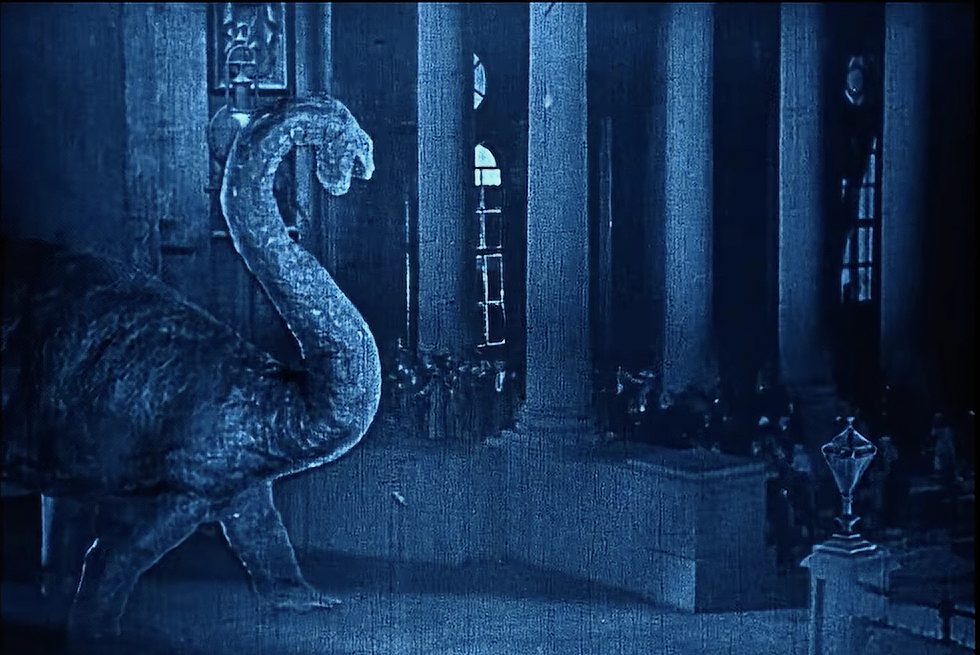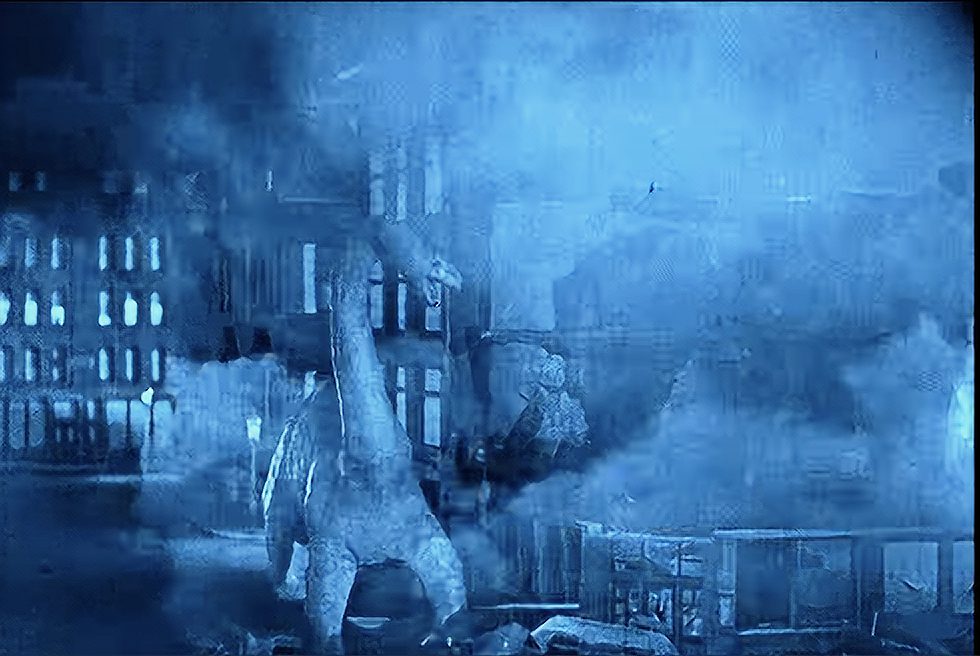
Watching “Monarch: Legacy of Monsters” and then “Godzilla: King of Monsters” with a sci-fi biologist is an experience I would really like to be able to share with friends. Comments range from “arthropods don't behave that way” to “what a ridiculous thing, a dinosaur with an opposable thumb.”
What's very clear there, besides Natalia's sense of humor, is that Godzilla and his friends (Mothra, Ebira, Rodan, Ghidorah…) are not real creatures. Sci-fi – where wonderful elements of extrapolation of scientific facts would be expected – but it is much closer to a scientist imaginarya genre that is the direct heir of myths and fairy tales.
This whole conversation may seem like just pedantry (what does a story's rating matter if it's good?), and generally speaking, when it comes to fantasy, I tend to run away every time someone threatens to take rating box schemes too seriously, but the current wave of… Monster movies and series – if you have not yet seen “Godzilla Minus One” in the cinema, you don't know what you are missing – draw attention for showing with great clarity that today, outside of explicitly religious contexts, the most effective myth is the one that parodies the language of science.
Giant monsters and superheroes are the original myths of the last 100 years, since the explosion of the planet Krypton in 1938 – and even before that: since the brontosaurus destroyed parts of London in the movie “The Lost World” 1925 – That each of these myths comes in a “scientific” package.
(Photos from the film illustrate this article.)
In fact, the brontosaurus on the loose in London symbolizes almost everything we'll see later with Godzilla: people running in panic through the streets; Seek shelter in subway stations. Monster demolish buildings and bridges. Even a mother with a child who falls in the street and narrowly escapes being trampled by the creature is there. If Godzilla is a myth about nature disturbed by technology – in this case, nuclear weapons – then “The Lost World” is a myth about nature disturbed by colonialism (the dinosaur arrived in London after being captured from the Amazon).
Ecology
Myths that imitate the language of science to tell stories about extraordinary organisms will, at some point, end up confronting the question of evolution, as will myths that use the language of science to tell stories about galactic empires. At some point, we will have to face the question of the maximum speed of light in a vacuum.
Space imaginaries have an extensive list of fairly plausible options for dealing with the complexities discovered by Albert Einstein – from “stargates” to “hyperspace jumps” – but unfortunately biological imaginaries have not yet found an elegant way around the problems. That sufficient interest in the work of Charles Darwin should lead to his intrigues. I've already commented a little about this in a previous Star Trek article, but of course, in the case of the monster world, the problems are even greater.
A galaxy populated entirely by aliens who look like human actors using facial prosthetics can still be “explained”, with a heavy dose of good faith, as a stage of convergent evolution – where natural selection finds similar solutions to similar problems, even on different worlds – but it is It's very difficult to fit into skyscraper-sized monsters, whose only ecological footprint is to destroy one city or another from time to time.
After all, an animal living today must have had parents, grandparents, and an entire lineage. You will also likely have siblings, cousins, a mating partner, and puppies. There are other animals (or plants) that he and his colleagues consume as food, leaving behind seeds, shells, and bones. And the digestion of all this food, by all this population, will also leave traces. And in the case of creatures like Godzilla and King Kong, there are significant implications.
When it comes to a giant lizard that spits radioactive fire, one would expect it to have a slightly larger ecological footprint than a trail of destruction across central Tokyo (or San Francisco, in the 2014 “Godzilla” movie). Even if the animal is the last of its species, where are the bones of its ancestors? Your leftovers? Your poo?
The problem takes on even greater dimensions when we see a scenario like the “Monsterverse” of the “Monarch” series and modern American films that include Godzilla and other classic monsters from Japanese cinema and King Kong: how many giant species are there? Formed by one individual Can they, with any plausibility, exist at the same time?
Monster hunters
This fact – no animal is isolated, without environmental impact – is actually one of the main challenges faced by real-world “monster hunters” who insist on searching for Bigfoot or the Loch Ness Monster. there Very interesting article from 2008 Which exactly addresses the difference in understanding of the scientific process between professional researchers and amateur Bigfoot hunters. Excerpt says:
“Professional scientists who have disparaged Bigfoot have argued that amateurs have no idea what they are doing. They do not have the methodologies and theoretical models necessary to understand why the creature is not understood from a biological, behavioral and evolutionary standpoint. Amateurs who believe the creature is real will rely not on evidence, but on belief Blindness and Magical Thinking Some scholars believe it is inappropriate to take seriously the nonsense of crazy hill people or fanatics who mistake natural creatures for monsters.
“Ironically, there was an element of resentment towards professionals in the amateur ranks, and for some of the same reasons. Amateurs accused professionals of being smart people isolated in their laboratories and libraries, with no idea of reality 'out there'. They were blinded by academic training. Their degrees and fancy titles made them smart Too much for their own good: their theoretical models do not allow them to take the “evidence” into account.
The power of myth
This rhetoric of tension between the stereotypes of the “crazy lunatic” and the “academic smart guy,” between the “real world” and the “laboratory,” is repeated in countless other fields, such as UFO science, alternative medicine, and perhaps most… Nervous. Day a day – vaccination.
It's also depicted very well in fiction: “Monarch” is about rebellious scientists who team up with “the Hills” who know the “real world” well and defy the expert consensus. With a few tweaks, in the same narrative scheme, Godzilla could be about a man who takes a COVID-19 vaccine, is transformed into a giant radioactive crocodile and has his existence stifled by the Marxist-capitalist pharmaceutical company Monarch — until it's too late.
In contemporary culture, myths have greater impact when they are packaged into a language that mimics the language of science, or at least what sounds like “science” to common sense. And the storytellers agree with this, which is completely reasonable and understandable.
But serious problems can arise when what should be merely a narrative outline becomes a model of reality in people's minds, and when the sham is confused with legitimate scientific discourse. Corrupt interests exploit this confusion, promising mythical results (eternal youth, instant cures, easy wealth) with supposed “scientific authority.”
Spoilers: At the end of the first season of the series “Monarch”, there is an attempt to address the environment of monsters, and the assumption that they exist, but in another dimension – the giants that appear on the surface of the Earth arrive here through portals (this solution is not original: it was used by DC Comics to solve the problem Your hollow earth problem In the comic series “Warlord”, “O Guerrero” in Brazil). It's a solution that, strictly speaking, doesn't solve anything, it just kicks the ball into the woods. But so what? When it comes to fantasy, anything goes, as long as it works as a story. It is this reality that is more demanding.
Carlos Orci is a journalist and editor-in-chief of Revista Questão de Ciência, author of O Livro dos Milagres (Editora da Unesp), O Livro da Astrologia (KDP), Negacionismo (Editora de Cultura) and co-author of “Pura Picaretagem” (Leya), and “Science in Daily Life” (Editora contexto), the work that won the Jabuti Prize, “Contra a Realidade” (Papirus 7 Mares), and “What nonsense!” (context editor)

“Wannabe internet buff. Future teen idol. Hardcore zombie guru. Gamer. Avid creator. Entrepreneur. Bacon ninja.”


